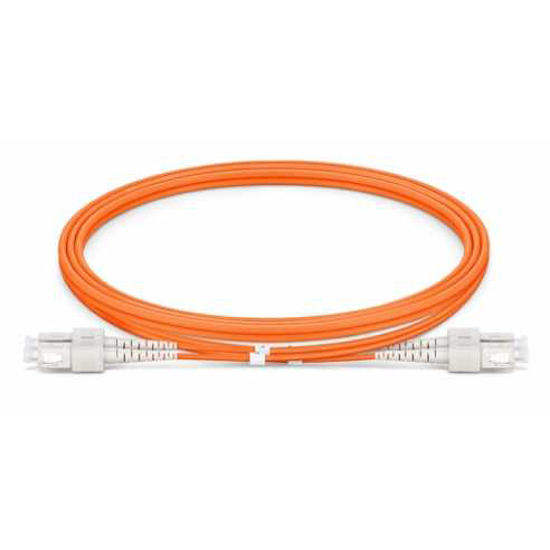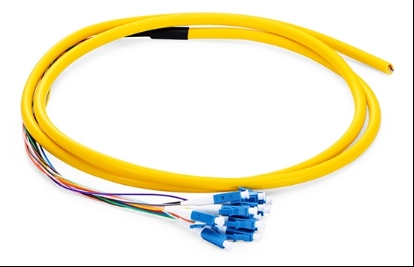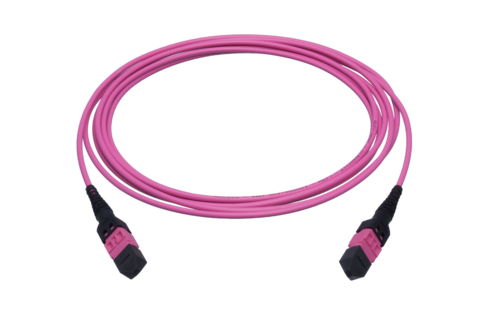In the field of optical communication, fiber specification is one of the important factors to ensure network performance and application stability. G.652.D, G.657.A1, and G.657.A2 are three common fiber specifications that differ in terms of transmission characteristics, applicable environments, and performance. This paper will deeply discuss the definition, characteristics, differences and advantages of these three specifications in practical application.
G.652.D Specifications for Optical fibers
G.652.D fiber is a single-mode fiber specification widely used in long-distance communications and metropolitan area networks. Its core features include:
Low transmission loss: G.652.D has low transmission loss and is suitable for scenarios that require a large range of transmission, such as international and transnational communications.
Medium bandwidth: Although the bandwidth is not as good as some emerging specifications, G.652.D performs well in most transmission scenarios.
Conventional outer diameter: The outer diameter of the G.652.D fiber is usually 125 microns, which meets the traditional standard.
In communication networks spanning large areas, G.652.D is widely used for high-speed data transmission. For example, the backbone network that connects international data centers is typically G.652.D fiber, ensuring that data is transmitted in an efficient and reliable manner.
G.652.D also performs well in Optical Amplifier applications. This fiber maintains signal strength over long distances and is suitable for the core backbone of fiber optic communications.

G.657.A1 Optical Fiber specification
G.657.A1 Fiber is a specification designed for special cabling environments and its core features include:
Bend Radius Advantage: G.657.A1 has a small bend radius, making it suitable for cabling environments that require high bending, such as FTTH (Fiber to the Home) applications within homes and businesses.
Superior mechanical properties: The G.657.A1 fiber performs well in terms of mechanical properties and is more suitable for scenarios that require frequent connection and bending.
In homes and businesses, G.657.A1 is widely used in FTTH cabling, especially in scenarios that need to cross curved areas. This fiber can be more flexible to bend and bend, ensuring that signal quality is not affected.
G.657.A1 is suitable for introducing fiber optics into homes and businesses, especially in limited Spaces, allowing for more flexible installation through the advantages of its bending radius.

G.657.A2 Optical Fiber Specifications
G.657.A2 is a further development of the specification based on G.657.A1, and its main features include:
Smaller bending radius: Compared to G.657.A1, G.657.A2 has a smaller bending radius, making it more suitable for restricted space and more demanding bending requirements.
Optimized mechanical properties: G.657.A2 is further optimized in terms of mechanical properties to provide better connection and bending properties.
G.657.A2 is commonly used for fiber access networks, especially in situations where fiber optics need to be brought into the interior of a building. Its smaller bending radius makes the cable easier to lay in a limited space.
In some compact space cabling scenarios, such as inside the data center, G.657.A2 can better adapt to the limited cabling space and provide a more flexible cabling scheme.
Compare
Transmission performance comparison
G.652.D: Suitable for long-distance transmission, with low transmission loss, but moderate relative bandwidth.
G.657.A1: Performs well at average transmission distances, but is slightly compromised compared to G.652.D. Smaller bending radius, suitable for specific wiring environments.
G.657.A2: The transmission performance is between G.652.D and G.657.A1, which is more suitable for some special wiring scenarios.
Comparison of bending properties
G.652.D: The bending performance is relatively poor, suitable for more linear wiring.
G.657.A1: With a small bending radius, it is suitable for scenes such as FTTH that require high bending.
G.657.A2: Better bending performance, suitable for limited space and high bending requirements of the wiring environment.
Comparison of mechanical properties
G.652.D: Normal mechanical performance, suitable for traditional communication scenarios.
G.657.A1: Good mechanical performance, suitable for frequently connected and bent environments.
G.657.A2: Further optimized on the basis of G.657.A1 to provide better mechanical properties.

conclusion
Considering the characteristics of the three optical fiber specifications G.652.D, G.657.A1, G.657.A2, we can draw the following conclusions:
If long distance transmission and general communication environment are required, G.652.D is a more suitable choice.
In environments where frequent connections and bending are required, the G.657.A1 has obvious advantages.
G.657.A2 is further optimized on the basis of G.657.A1, and performs better in some scenarios with limited space and high bending requirements.
The final choice depends on the specific application requirements. In practical applications, the most suitable fiber specifications can be selected based on factors such as network layout, environmental requirements, and budget to ensure network performance and reliability.
04-24
202404-23
202404-23
202404-08
202404-07
202403-26
202403-26
202403-18
202403-18
202403-13
2024
